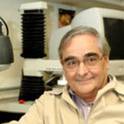A ubiquitous feature of the survival curves of heat-treated Bacillus stearothermophilus and several other bacilli spores is the existence of a prominent ‘activation shoulder’. The shape of the survival curve alone, however, is insufficient to establish whether the observed initial increase in the number of ‘recoverable’ or ‘retrievable’ spores is due to heat activation, improved dispersion (‘de-clumping’) or both. But regardless of the mechanism, one can estimate a lower bound of the total recoverable spores using a crude empirical mathematical model. Estimates based on published data obtained with this model show that there can be 5–8 folds more recoverable spores in a heat-treated sample than the initial count would indicate, but this requires direct experimental verification. If correct, the model could serve as a tool to interpret the various possible shapes of ‘activation shoulders’ and to quantify the rate at which bacterial spores become ‘recoverable’.
- Microbial survival,
- Heat inactivation,
- Sterilization,
- Bacillus stearothermophilus,
- Quantitative microbiology
Available at: http://works.bepress.com/micha_peleg/27/
